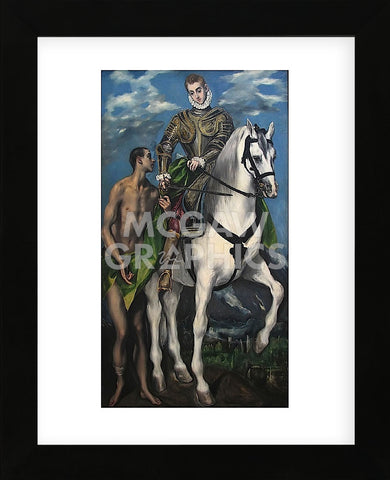Product Detail
- Overall: 16" H x 13" W x 0.75" D
- Overall Product Weight: 2.5lb.
- Material: Glass
- High-quality print on heavy paper
- Printed with vibrant, color-fast inks
- Framed in a contemporary style molding; available in black, gold, and white
- Sawtooth hanger
- Unmatted
Image is Copyrighted and Property of its respective owner
Product Detail
- Overall: 16" H x 13" W x 0.75" D
- Overall Product Weight: 2.5lb.
- Material: Glass
- High quality print on heavy paper
- Printed with vibrant, color-fast inks
- Framed in a contemporary style molding; available in black, white, and gold
- Sawtooth hanger
- Unmatted
About the Artist
El Greco (born 1541, Candia, Crete — died April 7, 1614, Toledo, Spain) was a Cretan-born Spanish painter, the first great master of Spanish painting. Documentation on his early life is limited, but it is known that he was in Venice c. 1566 – 70 and may have studied in Titian's workshop. In 1572 he was a member of the guild of St. Luke in Rome. His first commission in Spain (1577) was for altarpieces for the church of Santo Domingo el Antiguo in Toledo (1577 – 79); the paintings for the high altar show the influence of Titian and Michelangelo. In these works he developed his signature style: he chose a method of space elimination that is common to middle and late 16th-century Italian painters known as Mannerists. The elogonated figures in these works were also characteristic of his oeuvre. El Greco's Mannerist method of composition is nowhere more clearly expressed than in his masterpiece, The Burial of the Count de Orgaz (1586 – 88), where all of the action takes place in the frontal plane. From 1590 until his death his output was prodigious. His major commissions included the complete altar composition for the Hospital de la Caridad at Illescas (1603 – 05), for which he also worked as architect and sculptor. He excelled as a portraitist. His workshop produced many replicas of his works, but his style was so individual that his only followers were his son and a few forgotten imitators.





